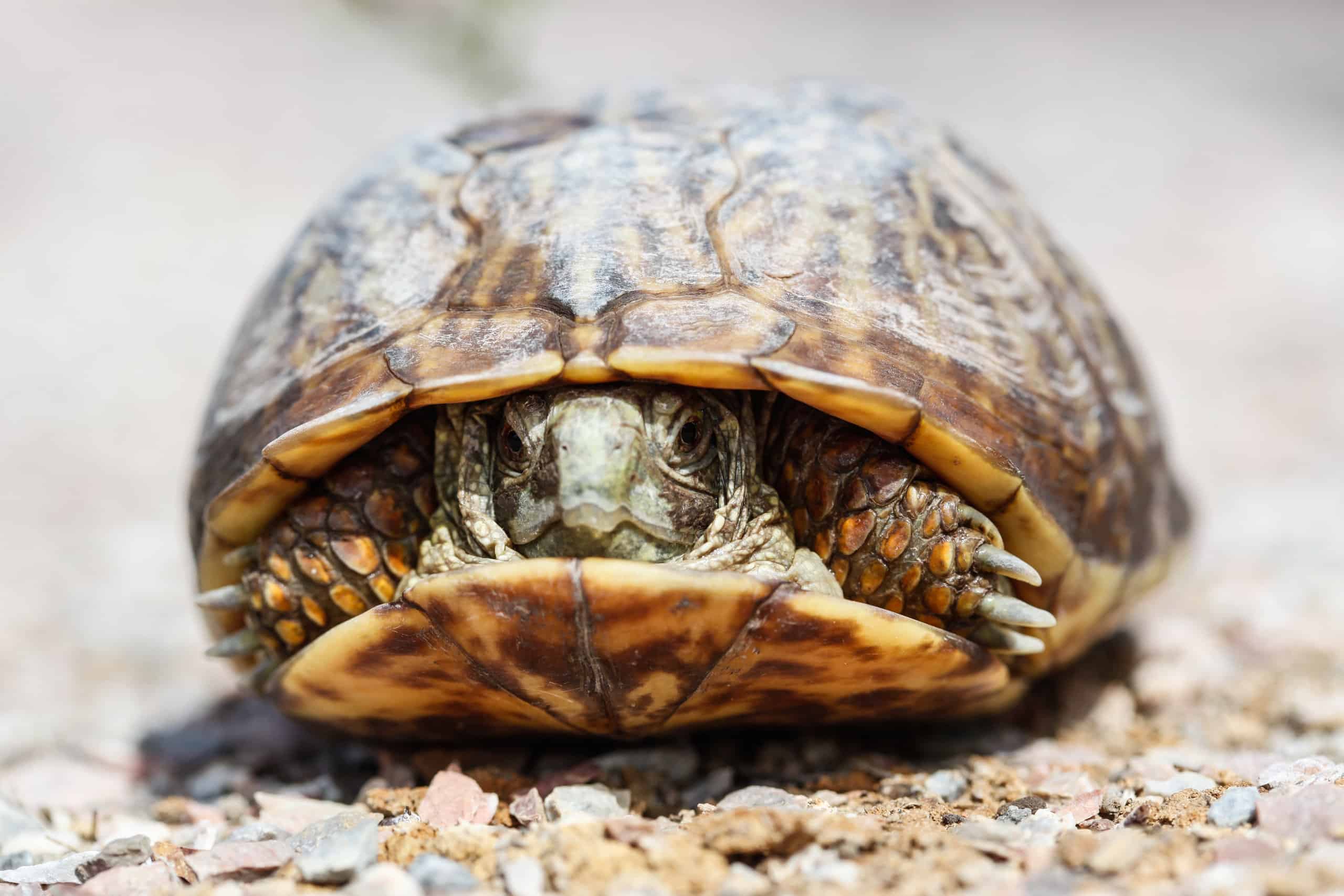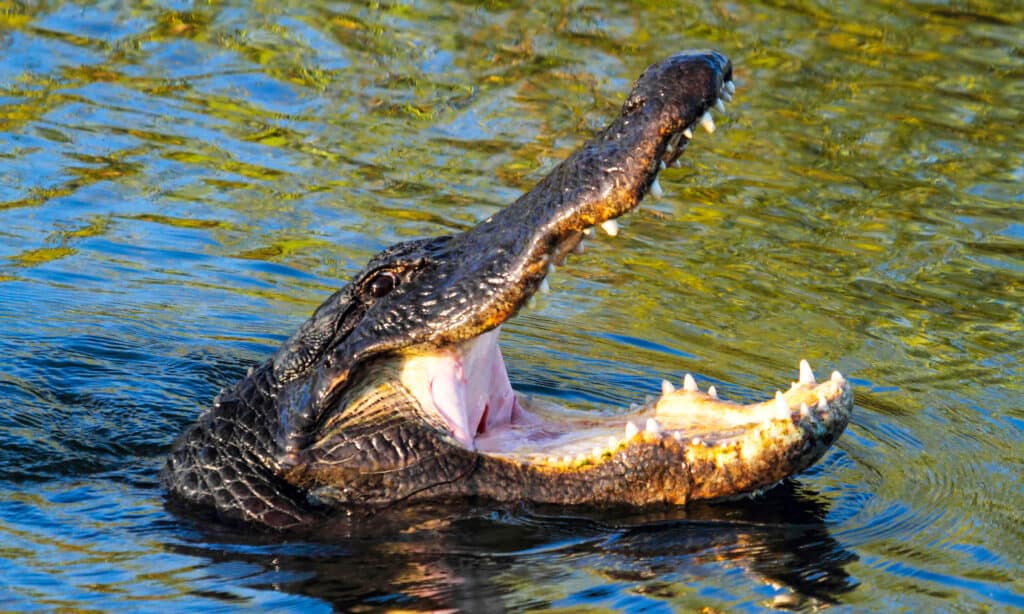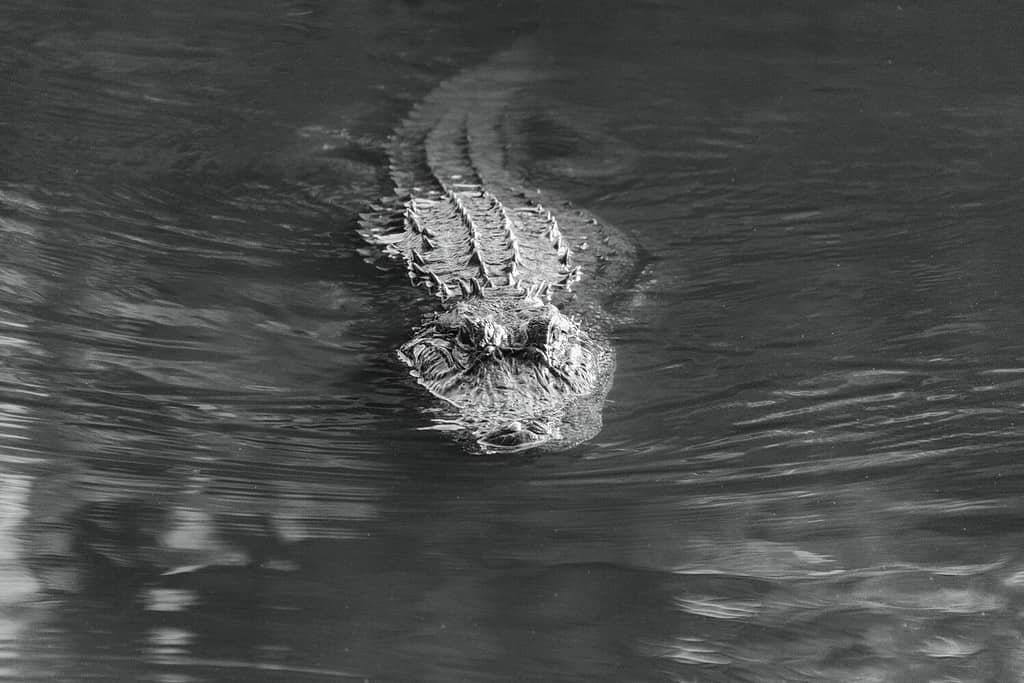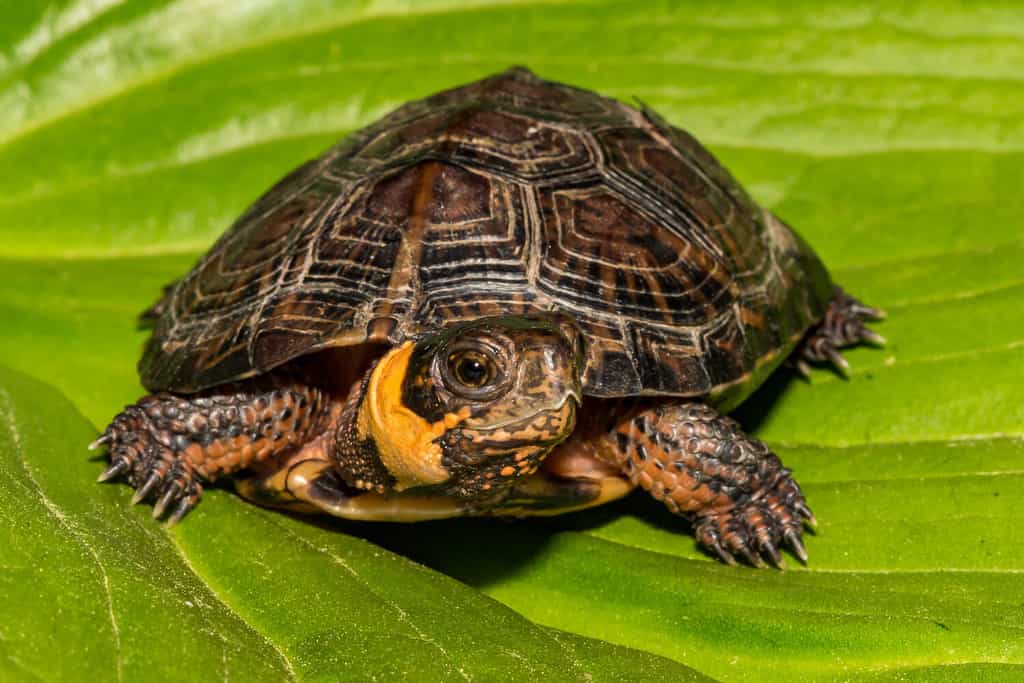Continue reading for our analysis...

This alligator didn’t get the meal it was hoping for when it chomped down on a turtle. Unbelievably, the confused reptile then seems to lose interest in the turtle altogether. It just stands there as the turtle uses a cute little hop to head toward the water. Watch the full video above of this turtle’s near-death experience and hop for freedom!
How Strong Are Turtle Shells?
Turtle shells are fascinating structures. They provide excellent protection for the animal’s body and are essentially fused ribs and parts of the pelvis. The shells have a complex microstructure made up of both inorganic elements and organic fibers. This provides a fracture toughness of 36.4 MPa m1/2 which is greater than aluminum.
Over the top of the bone part of the shell, there are structures called scutes. These are made of keratin which is the same material that horns and nails are made out of.

American alligators have a bite force that can crack a turtle’s shell
©Steve Byland/Shutterstock.com
Which Animals Can Crack Turtle Shells?
If a predator wants to eat a live adult turtle, it must be able to crack open the shell. This is why most animals only eat turtle eggs, baby turtles, or dead turtles – if they can reach inside the shell which many predators cannot. The shell has proved a highly effective defense strategy for turtles but some animals can get around it. Alligators are one of these animals.
A bite force of 2,125 psi has been recorded in a 665-pound, 12-foot American alligator! This is strong enough to crush a turtle’s shell. This particular alligator fumbled a bit as it was trying to position the turtle – which popped out of its mouth.
Some other animals can also eat turtles. Crocodiles are also able to crack their shells as can sharks.

Most turtle predators eat their eggs or baby turtles since their shells are very tough.
©Scenic Corner/Shutterstock.com
What Do Alligators Normally Eat?
When they are not struggling with tortoise shells, alligators eat fish, small mammals, and birds. They are usually solitary predators but younger individuals have been known to hunt in groups, presumably because this increases their chances of success whilst they are perfecting their hunting skills.
Alligators have also been spotted hunting larger animals such as deer and even the Florida panther and black bears!

Adult alligators are apex predators that will eat just about anything.
©Mix Tape/Shutterstock.com
Is it Normal Behavior for a Turtle to Escape an Alligator?
The situation in the video, a turtle bebopping away from an alligator in very close proximity, unscathed, is very rare. This scenario in most instances would end in the turtle’s death and a satisfied alligator. Alligators have a bite force strong enough to penetrate a turtle’s shell, and turtles are one of their common sources of food. Also, turtles are known for their slow movement; they can run on land up to 4 miles per hour. Alligators, on the other hand, can dash up to 35 miles per hour on land. This was one lucky turtle!

Turtles can swim much faster than they can run.
©Jay Ondreicka/Shutterstock.com
Thank you for reading! Have some feedback for us? Contact the AZ Animals editorial team.







